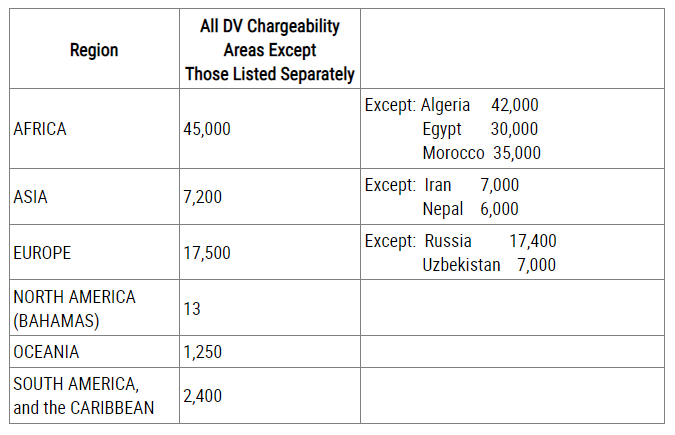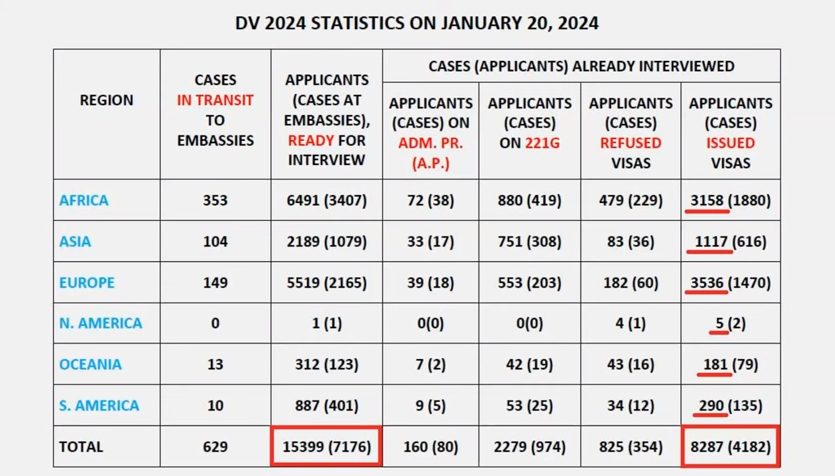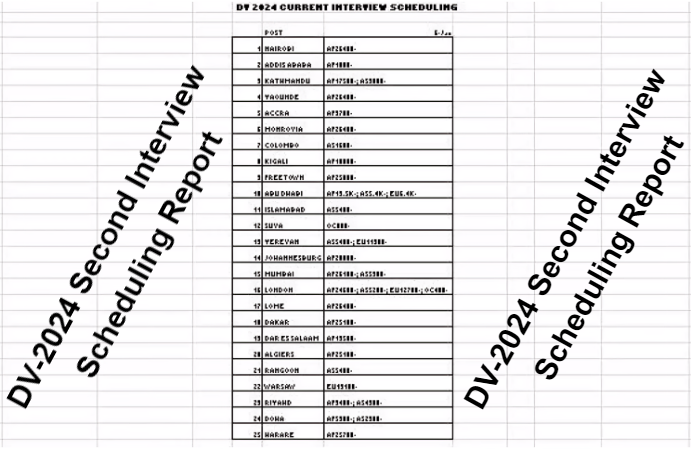DV Interview scheduling reports: This guide will explain what the interview scheduling reports are all about, and using examples, you will know how you can use these interview scheduling reports.
Note: Concerning the different case number ranges that are reported in the various interview scheduling reports. The case number ranges in the interview scheduling reports are actually case numbers that appear or that are shown the CEAC data. Most of you are aware that at the end of the working week, Xarthisius extracts the data from the CEAC website, and posts on their website. It is the case number ranges that are shown in the CEAC data that Xarthisius extracts that are present in the interview scheduling reports.
One reality that you should be aware of is that, all of that data is imported into this CEAC system by data entry workers at the U.S State Department. At the end of the working week, their staff enters the data. It is possible for the interview scheduling range that is reported for an embassy to not reflect the reality.
In other words, in the DV interview scheduling report, you may have a case number range that is lower than the actual case number range where interviews are being scheduled.
Over the weekend, those who enter the data in the CEAC system do not work, but when they resume work the following week, they continue from where they start. And so, generally, if at the end of one week, the exact situation or the reality is not presented in the interview scheduling report, the following week, the update will have been done and what you will get at the end of that second week will be the reality.
The CEAC data that Xarthisius extracts and posts on their website contains data related to interview scheduling. The importance of that data for you, a diversity visa applicant, is to give you an idea of how far or how close interview scheduling is from your case number.
For example, in the interview scheduling report, if Nairobi is currently at the 42,000 case number range, it tells applicants who are with case numbers just above 42,000 case number range that interview scheduling has come close to their case number range and that soon they can expect to be scheduled for interview.
It also indicates to those applicants assigned to the embassy in Nairobi with much higher case numbers, e.g 80,000 case number range, for example, that interview scheduling is still far from their case number, and so they cannot expect to be scheduled for interview soon.
That is how you should understand or interpret the various case number ranges that are present in the interview scheduling reports every weekend.
It doesn’t only concern your case number, the Interview scheduling reports also reflect the performance and the prospects of the embassy where you are assigned. How does that work? The time that interview scheduling takes at a certain case number range at an embassy, is an indication of the performance and the prospects for interview at that embassy.
For example, for Accra embassy, since the first CEAC data were released at the beginning of this year, Accra has been at 3,704, that’s the highest case number that have so far been at the Accra Embassy. And for the last three months, Accra has remained at that same position. That is an indication that the Accra Embassy is not performing well.
In addition to that, that is also an indication that prospects for interview at the Accra Embassy are bad. That’s another way you can use interview scheduling at your embassy as a diversity visa applicant.
With that, there should be no need why applicants should continue to ask concerning their chances of interview at this embassy or at the other embassy. Both the interview scheduling reports and the embassy prospects report should indicate to you as a diversity visa applicant, your chances of being scheduled for interview or the prospects of you being scheduled for interview, at each one of the various embassies represent in these reports.
That is how you should use DV interview scheduling as a diversity visa applicant.
In case you are in the position to access the CEAC data and see how far interview scheduling is at your embassy on a regular basis, say on a weekly basis, then it’s okay. But in case you cannot do that for yourself, perhaps you do not have the time, then the easier option will be to follow the interview scheduling report here because just by reading for a few minutes, you will have an idea of whether interview scheduling has taken a step closer to your case number range.
You will have an idea of your prospects or your chances for interview being assigned at your embassy.
Also, this concerns all regions, not just the Africa region, using Nairobi and Accra as examples, if you are not assigned at that embassy, all you need to do is to apply the concept to your own case. That is how it works.
DISCLAIMER: This post and content is designed for general information only and is NOT legal advice. This site is not offering any Diversity Visa and is not the official site for DV Lottery program. The information presented in this post should not be construed to be formal legal advice. If you have any questions about the DV lottery, please contact an immigration professional/officer or a licensed attorney.
 Jobsscholar Jobs Search | Education Hub | Scholars Portal
Jobsscholar Jobs Search | Education Hub | Scholars Portal


